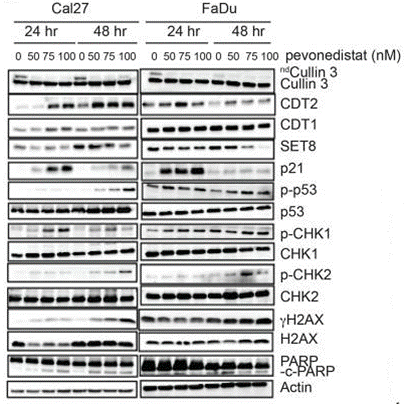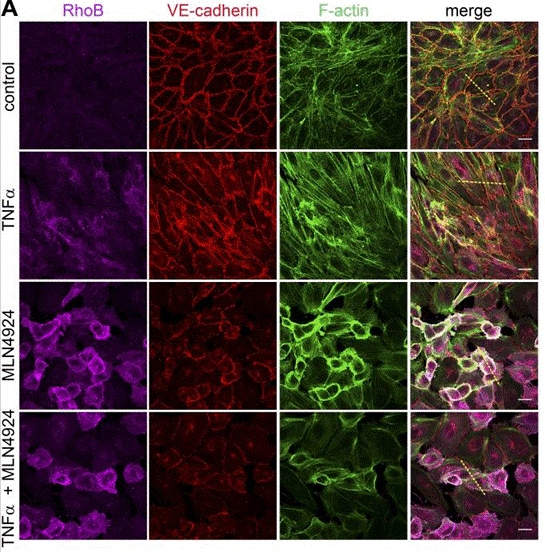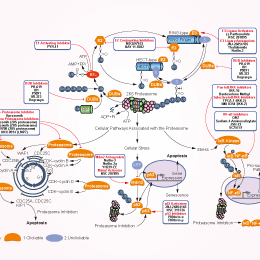
- Bioactive Compounds
- By Signaling Pathways
- PI3K/Akt/mTOR
- Epigenetics
- Methylation
- Immunology & Inflammation
- Protein Tyrosine Kinase
- Angiogenesis
- Apoptosis
- Autophagy
- ER stress & UPR
- JAK/STAT
- MAPK
- Cytoskeletal Signaling
- Cell Cycle
- TGF-beta/Smad
- DNA Damage/DNA Repair
- Compound Libraries
- Popular Compound Libraries
- Customize Library
- Clinical and FDA-approved Related
- Bioactive Compound Libraries
- Inhibitor Related
- Natural Product Related
- Metabolism Related
- Cell Death Related
- By Signaling Pathway
- By Disease
- Anti-infection and Antiviral Related
- Neuronal and Immunology Related
- Fragment and Covalent Related
- FDA-approved Drug Library
- FDA-approved & Passed Phase I Drug Library
- Preclinical/Clinical Compound Library
- Bioactive Compound Library-I
- Bioactive Compound Library-Ⅱ
- Kinase Inhibitor Library
- Express-Pick Library
- Natural Product Library
- Human Endogenous Metabolite Compound Library
- Alkaloid Compound LibraryNew
- Angiogenesis Related compound Library
- Anti-Aging Compound Library
- Anti-alzheimer Disease Compound Library
- Antibiotics compound Library
- Anti-cancer Compound Library
- Anti-cancer Compound Library-Ⅱ
- Anti-cancer Metabolism Compound Library
- Anti-Cardiovascular Disease Compound Library
- Anti-diabetic Compound Library
- Anti-infection Compound Library
- Antioxidant Compound Library
- Anti-parasitic Compound Library
- Antiviral Compound Library
- Apoptosis Compound Library
- Autophagy Compound Library
- Calcium Channel Blocker LibraryNew
- Cambridge Cancer Compound Library
- Carbohydrate Metabolism Compound LibraryNew
- Cell Cycle compound library
- CNS-Penetrant Compound Library
- Covalent Inhibitor Library
- Cytokine Inhibitor LibraryNew
- Cytoskeletal Signaling Pathway Compound Library
- DNA Damage/DNA Repair compound Library
- Drug-like Compound Library
- Endoplasmic Reticulum Stress Compound Library
- Epigenetics Compound Library
- Exosome Secretion Related Compound LibraryNew
- FDA-approved Anticancer Drug LibraryNew
- Ferroptosis Compound Library
- Flavonoid Compound Library
- Fragment Library
- Glutamine Metabolism Compound Library
- Glycolysis Compound Library
- GPCR Compound Library
- Gut Microbial Metabolite Library
- HIF-1 Signaling Pathway Compound Library
- Highly Selective Inhibitor Library
- Histone modification compound library
- HTS Library for Drug Discovery
- Human Hormone Related Compound LibraryNew
- Human Transcription Factor Compound LibraryNew
- Immunology/Inflammation Compound Library
- Inhibitor Library
- Ion Channel Ligand Library
- JAK/STAT compound library
- Lipid Metabolism Compound LibraryNew
- Macrocyclic Compound Library
- MAPK Inhibitor Library
- Medicine Food Homology Compound Library
- Metabolism Compound Library
- Methylation Compound Library
- Mouse Metabolite Compound LibraryNew
- Natural Organic Compound Library
- Neuronal Signaling Compound Library
- NF-κB Signaling Compound Library
- Nucleoside Analogue Library
- Obesity Compound Library
- Oxidative Stress Compound LibraryNew
- Plant Extract Library
- Phenotypic Screening Library
- PI3K/Akt Inhibitor Library
- Protease Inhibitor Library
- Protein-protein Interaction Inhibitor Library
- Pyroptosis Compound Library
- Small Molecule Immuno-Oncology Compound Library
- Mitochondria-Targeted Compound LibraryNew
- Stem Cell Differentiation Compound LibraryNew
- Stem Cell Signaling Compound Library
- Natural Phenol Compound LibraryNew
- Natural Terpenoid Compound LibraryNew
- TGF-beta/Smad compound library
- Traditional Chinese Medicine Library
- Tyrosine Kinase Inhibitor Library
- Ubiquitination Compound Library
-
Cherry Picking
You can personalize your library with chemicals from within Selleck's inventory. Build the right library for your research endeavors by choosing from compounds in all of our available libraries.
Please contact us at info@selleckchem.com to customize your library.
You could select:
- Antibodies
- Bioreagents
- qPCR
- 2x SYBR Green qPCR Master Mix
- 2x SYBR Green qPCR Master Mix(Low ROX)
- 2x SYBR Green qPCR Master Mix(High ROX)
- Protein Assay
- Protein A/G Magnetic Beads for IP
- Anti-Flag magnetic beads
- Anti-Flag Affinity Gel
- Anti-Myc magnetic beads
- Anti-HA magnetic beads
- Poly DYKDDDDK Tag Peptide lyophilized powder
- Protease Inhibitor Cocktail
- Protease Inhibitor Cocktail (EDTA-Free, 100X in DMSO)
- Phosphatase Inhibitor Cocktail (2 Tubes, 100X)
- Cell Biology
- Cell Counting Kit-8 (CCK-8)
- Animal Experiment
- Mouse Direct PCR Kit (For Genotyping)
- New Products
- Contact Us
research use only
Pevonedistat (MLN4924) E1 Activating inhibitor
Pevonedistat (MLN4924) is a small molecule inhibitor of Nedd8 activating enzyme (NAE) with IC50 of 4 nM.

Chemical Structure
Molecular Weight: 443.52
Purity & Quality Control
Batch:
Purity:
99.99%
99.99
Related Products
| Related Products | TAK-243 (MLN7243) PYR-41 ML792 | Click to Expand |
|---|---|---|
| Related Compound Libraries | Kinase Inhibitor Library FDA-approved Drug Library Natural Product Library Bioactive Compound Library-I Highly Selective Inhibitor Library | Click to Expand |
Signaling Pathway
Cell Culture and Working Concentration
| Cell Lines | Assay Type | Concentration | Incubation Time | Formulation | Activity Description | PMID |
|---|---|---|---|---|---|---|
| K562 | Antiproliferative assay | 72 hrs | Antiproliferative activity against human K562 cells after 72 hrs by CellTiter-Glo assay, EC50 = 0.108 μM. | 24900352 | ||
| U2OS | Antitumor assay | 72 hrs | Antitumor activity against human U2OS cells after 72 hrs by MTT assay, IC50 = 0.16 μM. | 28388520 | ||
| HCT116 | Antitumor assay | 72 hrs | Antitumor activity against human HCT116 cells after 72 hrs by MTT assay, IC50 = 0.19 μM. | 28388520 | ||
| Caco2 | Function assay | 16 hrs | Inhibition of NAE-mediated Ubcl2-NEDD8 conjugation in human Caco2 cells after 16 hrs by Western blot analysis, EC50 = 3.4 μM. | 29232579 | ||
| Caco2 | Function assay | 16 hrs | Inhibition of NAE-mediated Ubcl2-NEDD8 conjugation in human Caco2 cells after 16 hrs by Western blot analysis, EC50 = 3.4 μM. | 29232579 | ||
| Caco2 | Cytotoxicity assay | 72 hrs | Cytotoxicity against human Caco2 cells after 72 hrs by MTT assay, IC50 = 4.4 μM. | 29232579 | ||
| Click to View More Cell Line Experimental Data | ||||||
Mechanism of Action
| Features | A mechanism-based inhibitor of NAE, and creates a covalent NEDD8-MLN4924 adduct catalyzed by the enzyme. | ||
|---|---|---|---|
| Targets |
|
In vitro |
||||
| In vitro | Pevonedistat (MLN4924) is structurally related to adenosine 59-monophosphate (AMP)—a tight binding product of the NAE reaction. It (3 μM) selectively inhibits NAE in HCT-116 cell lysates and inhibits overall protein turnover by <9% in HCT-116 cells. This compound results in a dose-dependent decrease of Ubc12–NEDD8 thioester and NEDD8–cullin conjugates with an IC50 < 0.1 μM in HCT-116 cells, resulting in a reciprocal increase in the abundance of the known CRL substrates CDT1, p27 and NRF2, but not non-CRL substrates. It (3 μM) leads cells to accumulate in S-phase as early as 8 hours and results in a significant fraction of cells contained 4N DNA content by 24 hours in HCT-116 cells. [1] At the same concentration, it results in rapid accumulation of pIkappaBalpha, decrease in nuclear p65 content, reduction of nuclear factor-kappaB (NF-kappaB) transcriptional activity, and G(1) arrest, ultimately resulting in apoptosis induction, events consistent with potent NF-kappaB pathway inhibition in ABC DLBCL cells. [2] At 1 μM, it triggers DNA replication and inhibits cell proliferation by stabilizing the DNA replication factor Cdt1, a substrate of cullins 1 and 4. This concentration, which is sufficient to elevate Cdt1 for 4-5 hours, is found to be sufficient to induce DNA replication and to activate apoptosis and senescence pathways. [3] Treatment with this compound induces the characteristics of senescence phenotypes as evidenced by enlarged and flattened cellular morphology and positive staining of senescence-associated β-Gal. MLN4924-induced senescence is associated with cellular response to DNA damage, triggered by accumulation of DNA-licensing proteins CDT1 and ORC1, as a result of inactivation of CRL/SCF E3s. It is irreversible and coupled with persistent accumulation of p21 and sustained activation of DNA damage response. [4] | |||
|---|---|---|---|---|
| Kinase Assay | In vitro E1-activating enzyme assays | |||
| A time-resolved fluorescence energy transfer assay format is used to measure the in vitro activity of NAE. The enzymatic reaction, containing 50 μL 50 mM HEPES, pH 7.5, 0.05% BSA, 5 mM MgCl2, 20 μM ATP, 250 μM glutathione, 10 nM Ubc12–GST, 75 nM NEDD8–Flag and 0.3 nM recombinant human NAE enzyme, is incubated at 24 ℃ for 90 min in a 384-well plate, before termination with 25 μL of stop/detection buffer (0.1 M HEPES, pH 7.5, 0.05% Tween20, 20 mM EDTA, 410 mM KF, 0.53 nM Europium-Cryptate-labelled monoclonal Flag-M2-specific antibody and 8.125 μg/mL PHYCOLINK allophycocyanin (XL-APC)-labelled GST-specific antibody. After incubation for 2 hours at 24 ℃, the plate is read on the LJL Analyst HT Multi-Mode instrument using a time-resolved fluorescence method. A similar assay protocol is used to measure other E1 enzymes. | ||||
| Cell Research | Cell lines | HCT-116 cells | ||
| Concentrations | 3 μM | |||
| Incubation Time | 72 hours | |||
| Method | Cell suspensions are seeded at 3,000–8,000 cells per well in 96-well culture plates and incubated overnight at 37 ℃. Pevonedistat (MLN4924) is then added to the cells in complete growth media and incubated for 72 hours at 37 ℃. Cell number is quantified using the ATPlite assay. | |||
| Experimental Result Images | Methods | Biomarkers | Images | PMID |
| Western blot | Culin 3 / CDT2 / CDT1 / SET8 / p21 / p-p53 / p-CHK1 / p-CHK2 / CHK2 / γH2AX / H2AX / PARP / c-PARP Culin 1 / WEE1 / p27 / p-H3 / cyclin B1 Cleaved caspase-3 / Cleaved PARP pro-apoptotic and anti-apoptotic proteins p-c-Jun / c-Jun p-H2A / p-CHK2 p-AKT / p-mTOR / p-70S6K |

|
28838998 | |
| Immunofluorescence | RhoB / VE-cadherin / F-actin |

|
29358211 | |
| Growth inhibition assay | Cell viability |

|
27333051 | |
In Vivo |
||
| In vivo | Pevonedistat (MLN4924) (60 mg/kg) results in a dose- and time-dependent decrease of NEDD8–cullin levels as early as 30 min after administration in HCT-116 tumour-bearing mice, with maximal effect 1–2 hours post-dose. It also leads to a dose- and time-dependent increase in the steady state levels of NRF2 and CDT1 in HCT-116 tumour-bearing mice. This compound leads to DNA damage in the tumour indicated by the increased levels of phosphorylated CHK1 in HCT-116 tumour-bearing mice. When administered on a BID schedule at 30 mg/kg and 60 mg/kg, it inhibits tumour growth with T/C values of 0.36 and 0.15, respectively, in mice bearing HCT-116 xenografts. [1] It (60 mg/kg) blocks NAE pathway biomarkers and results in complete tumor growth inhibition in mice bearing human xenograft tumors of ABC- and GCB-DLBCL. This compound (60 mg/kg) results in NF-kappaB pathway inhibition accompanied by tumor regressions in primary human tumor mice models of ABC-DLBCL. [2] | |
|---|---|---|
| Animal Research | Animal Models | mice bearing HCT-116 xenografts |
| Dosages | 60 mg/kg | |
| Administration | Subcutaneously injection | |
| NCT Number | Recruitment | Conditions | Sponsor/Collaborators | Start Date | Phases |
|---|---|---|---|---|---|
| NCT04985656 | Withdrawn | Myelodysplastic Syndromes (MDS) |
Takeda |
October 1 2021 | Phase 2 |
| NCT04800627 | Terminated | Locally Advanced Malignant Solid Neoplasm|Metastatic Malignant Solid Neoplasm|Unresectable Malignant Solid Neoplasm |
M.D. Anderson Cancer Center |
March 29 2021 | Phase 1|Phase 2 |
| NCT04266795 | Active not recruiting | Acute Myeloid Leukemia (AML) |
Takeda |
October 13 2020 | Phase 2 |
| NCT03770260 | Completed | Recurrent Multiple Myeloma|Refractory Multiple Myeloma |
National Cancer Institute (NCI) |
February 10 2020 | Phase 1 |
| NCT04172844 | Active not recruiting | Acute Myelogenous Leukemia |
Medical College of Wisconsin |
January 13 2020 | Phase 1 |
References |
|
Chemical Information
| Molecular Weight | 443.52 | Formula | C21H25N5O4S |
| CAS No. | 905579-51-3 | SDF | Download SDF |
| Smiles | C1CC2=CC=CC=C2C1NC3=C4C=CN(C4=NC=N3)C5CC(C(C5)O)COS(=O)(=O)N | ||
Storage and Stability
| Storage (From the date of receipt) | |||
|
In vitro |
DMSO : 89 mg/mL ( (200.66 mM) Moisture-absorbing DMSO reduces solubility. Please use fresh DMSO.) Ethanol : 22 mg/mL Water : Insoluble |
Molecular Weight Calculator |
|
In vivo Add solvents to the product individually and in order. |
In vivo Formulation Calculator |
|||||
Preparing Stock Solutions
Molarity Calculator
In vivo Formulation Calculator (Clear solution)
Step 1: Enter information below (Recommended: An additional animal making an allowance for loss during the experiment)
mg/kg
g
μL
Step 2: Enter the in vivo formulation (This is only the calculator, not formulation. Please contact us first if there is no in vivo formulation at the solubility Section.)
% DMSO
%
% Tween 80
% ddH2O
%DMSO
%
Calculation results:
Working concentration: mg/ml;
Method for preparing DMSO master liquid: mg drug pre-dissolved in μL DMSO ( Master liquid concentration mg/mL, Please contact us first if the concentration exceeds the DMSO solubility of the batch of drug. )
Method for preparing in vivo formulation: Take μL DMSO master liquid, next addμL PEG300, mix and clarify, next addμL Tween 80, mix and clarify, next add μL ddH2O, mix and clarify.
Method for preparing in vivo formulation: Take μL DMSO master liquid, next add μL Corn oil, mix and clarify.
Note: 1. Please make sure the liquid is clear before adding the next solvent.
2. Be sure to add the solvent(s) in order. You must ensure that the solution obtained, in the previous addition, is a clear solution before proceeding to add the next solvent. Physical methods such
as vortex, ultrasound or hot water bath can be used to aid dissolving.
Tech Support
Answers to questions you may have can be found in the inhibitor handling instructions. Topics include how to prepare stock solutions, how to store inhibitors, and issues that need special attention for cell-based assays and animal experiments.
Tel: +1-832-582-8158 Ext:3
If you have any other enquiries, please leave a message.
* Indicates a Required Field






































